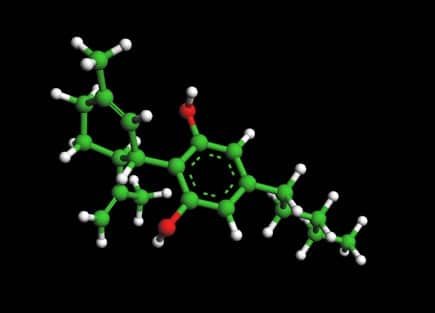Cannabinoids and terpenes are clearly the main focus of cannabis extraction. However, it’s believed that there are over 500 compounds found in living cannabis, with who knows how many of therapeutic value. With these estimates constantly growing, we’ve only scratched the surface of the true understanding of cannabis’s complex, multi-dimensional nature and effects.
Knowing the power of the entourage effect, it’s important to pay attention to the many molecules besides THC, CBD, and our beloved terpenes that enrich a cannabis concentrate.
Other Cannabis Compounds
Lipids
Lipids are molecules like fats, steroids, waxes. Their organic chemistry means they’re not soluble in water, but can be solubilized using organic solvents. This is one reason why winterization is performed as part of the refinement of cannabis concentrates manufactured using butane or ethanol. These days, scientists are concerned over the inhalation of lipids, as there is a type of pneumonia that can occur from the accumulation of lipids in the drugs. While the illness is rare, and the jury is out on the danger of residual lipids in cannabis extracts, they can be present.
Flavonoids
When it comes to cannabis, flavonoids tend to live in terpenes’ shadow, but experts believe the two compounds are a duo that are responsible in concert for what terpenes usually get the sole credit for.
Flavonoids, similar to terpenes, surface in various places throughout nature [1], especially in flowers, vegetables, and fruits. However, there are those flavonoids that seem to be found only in cannabis. These molecules are known as cannaflavins.
Generally speaking, flavonoids are very understudied. But, what we do know with relative certainty is that they play a role (perhaps bigger than we may think) in the entourage effect, in addition to having beneficial properties of their own. For example, Orientin, Quercetin, Silymarin, and Kaempferol, which are all found in cannabis, have revealed anti-inflammatory, anti-fungal, antioxidant, and anti-cancer promise. [1, 2]
Further Research
More research is required to unravel the mysteries that lie in the uncharted territories beyond THC, CBD, and terpenes in order to start targeting lesser-known molecules for extraction. A couple of experiments have been performed to test out how different extraction methods work for targeting such molecules [4, 5],giving us a glimpse that has us stoked to see what the future of these molecules holds.
References:
[1] Panche, J. et al. Flavonoids: an overview, Journal of Nutritional Science, 2016, Volume 5: e47. [Journal Impact Factor = N/A; Times Cited = 182]
[2] Baron EP, Medicinal Properties of Cannabinoids, Terpenes, and Flavonoids in Cannabis, and Benefits in Migraine, Headache, and Pain: An Update on Current Evidence and Cannabis Science, Headache. 2018, 58(7):1139-1186.[Journal Impact Factor = 3.189; Times Cited =3]
[3] Batra, P & Sharma, A.Anti-cancer potential of flavonoids: recent trends and future perspectives, 3 Biotech. 2013, 3(6): 439–459.[Journal Impact Factor = 1.497, Times Cited = 188]
[4] Miller, M. et al. Chemical Profiling of Medical Cannabis Extracts, ACS Omega, 2017, 2 (9), pp 6091–6103. [Journal Impact Factor = N/A, Times Cited = 5]
[5] Romano, L. & Hazekamp, A. Cannabis Oil: Chemical Evaluation of an Upcoming Cannabis-Based Medicine. Cannabinoids. 2013, 1/1/1-11. Times Cited = 36
Image Credits: World of Molecules











